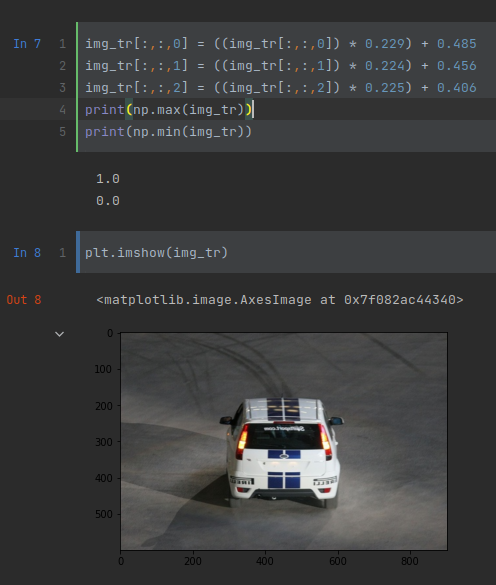여기서 말하는 tensor는 pytorch tensor임.
변환방법
1. 바닐라 방법(제일 좋은듯)
def image_tensor_to_numpy(tensor_image):
# If this is already a numpy image, just return it
if type(tensor_image) == np.ndarray:
return tensor_image
# Make sure this is a tensor and not a variable
if type(tensor_image) == Variable:
tensor_image = tensor_image.data
# Convert to numpy and move to CPU if necessary
np_img = tensor_image.detach().cpu().numpy()
# If there is no batch dimension, add one
if len(np_img.shape) == 3:
np_img = np_img[np.newaxis, ...]
# Convert from BxCxHxW (PyTorch convention) to BxHxWxC (OpenCV/numpy convention)
np_img = np_img.transpose(0, 2, 3, 1)
return np_img
def image_numpy_to_tensor(np_image):
if len(np_image.shape) == 3:
np_image = np_image[np.newaxis, ...]
# Convert from BxHxWxC (OpenCV/numpy) to BxCxHxW (PyTorch)
np_image = np_image.transpose(0, 3, 1, 2)
tensor_image = torch.from_numpy(np_image).float()
return tensor_image
2. albumentations에서 tensor -> PIL image로 바꾸는걸 사용하는 방법
(나중에 추가하겠음.)
3. 직접 바꾸기
답답해서 직접 만든다 아오..
https://pytorch.org/vision/main/generated/torchvision.transforms.Normalize.html
Normalize — Torchvision main documentation
Shortcuts
pytorch.org
torchvision normalize 수식 보면 이래 설명됨.

주의할건 우리가 알고있는 이미지는 r,g,b로 [0~255] 이지만 torchvision의 input 이미지가 애초에 rgb [0~1]로 가정하고 만들어진 듯.
그래서 저 수식 반대로 하면 된다.
def inverse_normalize(img, mean=[0.485, 0.456, 0.406], std=[0.229, 0.224, 0.225]):
"""
:param img: numpy array. shape (height, width, channel). [-1~1]
:return: numpy array. shape (height, width, channel). [0~1]
"""
img[:,:,0] = ((img[:,:,0]) * std[0]) + mean[0]
img[:,:,1] = ((img[:,:,1]) * std[1]) + mean[1]
img[:,:,2] = ((img[:,:,2]) * std[2]) + mean[2]
return img
'기술 > Computer Vision' 카테고리의 다른 글
| self-supervised learning (0) | 2022.01.17 |
|---|---|
| conv1d, conv2d, conv3d (0) | 2021.11.01 |
| 랜덤 샘플 이미지 (0) | 2021.10.06 |
| image normalize, inverse normalize (0) | 2021.09.16 |
| 컴퓨터비전 방법론들 (0) | 2021.08.01 |
